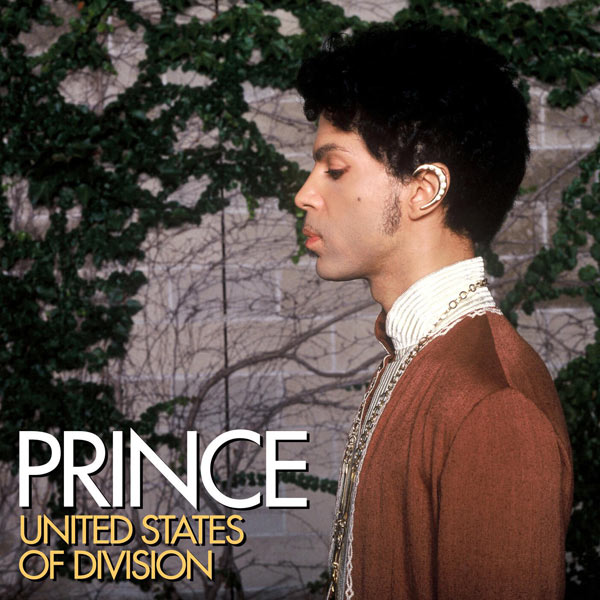Home /
Prince and the Warner dispute
Part 3 – Eye Hate U
By Goldies Parade
Prince had been referring to his backing band as New Power Generation (NPG) since 1988’s Lovesexy, yet it was not until 1991 after two more albums that a writing collaboration with the band would be shared with Prince. Prince co-crediting New Power Generation was the result of the first wholesale revamping of his backing band since dissolving The Revolution in 1986, whose members were reorganised to different roles during succeeding tours or dropped completely from the line-up. With the creation of the NPG was an ensemble comprised of local Minneapolis musicians. Michael Bland, who replaced Shelia E for the Nude Tour, remained on drums, was joined by old acquaintance Sonny “T” Thompson replacing Levi Seacer on bass. The Steeles Keyboardist Tommy “Barbarella” Elm was hired in replacement of Revolution’s “Dr” Matt Fink. Joining Prince’s backing band in November 1978, Fink was his longest-serving band member when he quit in December 1990. Seacer was switched to guitar in place of Miko Weaver. Rosie Gaines, an introduction through Seacer in 1989, remained on second keyboards and supporting vox.
With the additions of Tony “M” Mosley as resident rapper, Damon “D” Dickson and Kirk (‘Kirky J’) Johnson on percussion (the trio were once extras in the movie Purple Rain), Prince assembled his new band in response to remain contemporary in the growth of hip hop. Prince was delighted with the new line-up, and inaugurated the NPG with a baptism of fire with two headlining performances at Rock In Rio on 19th and 24th January 1991 staged at the city’s iconic Maracană Stadium, playing to 60,000 nightly – the first night televised on MTV.
NPG’s debut project which they received given equal billing with Prince was titled Diamonds And Pearls. On 5 September 1991, Prince and the NPG played a barnstorming performance of Gett Off at the MTV Video Music Awards. Warner gave it heavy promotion and when the LP dropped on 19 October, sales went double Platinum. Its singles also produced Prince his seventh and eighth US number ones – with the title track and Cream. Although praised for its high standard of music, the album received criticism in the music press that Prince had followed rather than set the latest trend. Diamonds And Pearls embraced multiple genres, yet its take on hip hop was hip hop with Prince treatment. Nonetheless the album smashed its commercial ambitions and 5 million copies were sold worldwide. More importantly, charting at number 3, Prince’s commercial appeal was seen as fully restored at long last in the US.

It was not all smooth sailing. The previous summer found Prince embroiled in controversy with his own fan base, having been booked to headline The Summer Extravaganza festival at Blenheim Palace on 31 August 1991, for which he received a £300k advance for what would be his only UK show of 1991. Unhappy with how the event was being managed Prince pulled out, but the advance paid and the cost of staging the show forced its cash-strapped promoters to cancel the event and the nearly 50k tickets already sold could not be refunded. Legal action was threatened and eventually that December, Paisley Park’s director was dispatched to London to announce that fans could exchange their tickets for priority seats at the forthcoming Diamonds And Pearls Tour. The ensuing debacle over the tickets led it to become the most famous concert that Prince had never played, but soured his relationship with British fans for years to follow. When the Diamonds And Pearls world tour began in the spring of 1992 it proved a considerable success and smashed venue records throughout, most tellingly with a run of eight capacity-filled back-to-back shows at London’s 18,000 seat Earls Court arena. A total of 850,000 attended the tour across its 50 dates, but again Prince shied away from the US to tour where album sales was strongest: Europe, Japan and Australia. Following the tour, Rosie Gaines quit the NPG due to tensions with other band members and how Prince handled that. And while the group since passed through many incarnations NPG remained the official moniker of Prince’s backing group up until 2014.
The tour’s early dates served also to showcase his latest love interest and protégé Carmen Electra as a rapping Go Go dance act. During the album sessions Prince was also keen to promote the creative talents of rising star Martika. He wrote three songs for her second album, the hits Love… Thy Will Be Done and Martika’s Kitchen, and Spirit. Marta “Martika” Marrero was widely touted at the time as the next Madonna. Prince’s magical touch with Diamonds And Pearls and as well the recent and resounding success of the Batman OST spurred Warner Brothers to double its effort to extend its publishing contract with Prince. On 31 August 1992 they signed a six album extension valued at a record $100m, the largest contract to that time for any solo artist. To sweeten the deal Warner even took the highly unusual step to gift a musician the role of VP of A&R, which came with a seat on their board and all its trappings, including a suite of offices at their Century City headquarters. Despite its value, the contract would quickly prove to be a poisoned chalice and would define the remainder of Prince’s career.
From the outset, Prince lamented the moment he signed this deal, recalling how his hand shook as he signed his name on the contract because of the extent of the publishing and ownership of his music it transferred to Warner Bros Records. But he was in urgent need of cash to continue recording and maintain the $2m annual upkeep of Paisley Park Studios, kept on 24-hour readiness should he wish to record at any time day or night. The contract would indeed guarantee Prince a substantial $10 million advance for each album, that is as long that the preceding album shipped at least 5 million units: the amount Warner needed to recoup their advance, after deducting Prince’s royalty rate of 20%. Despite Prince’s commercial success as an established artist, 1991’s Diamonds And Pearls which although enjoyed chart success achieved just two million unit sales in the US. Collectively Prince’s historical output of all his thirteen previous and most popular albums, those released between 1978 and the contract of 1992, total sales amounted to $300 million in revenue. His releases post 1993 therefore needed to sell five million copies per release in order to net Warner the desired $100 million over just six albums in order to just recoup this investment. This was a wholly unrealistic expectation on Prince to better the success he achieved at the peak of his fame in the 1980s. At best Warner would be lucky to breakeven. Particularly at this time when the landscape of mainstream music was changing due to the explosion of R&B and hip hop that offered new voice and a fresh sound in an already crowded music industry. In the attempt to tap into the genre, in 1992 Prince produced Carmen’s debut LP, to take the world by storm. Costing $1 million to promote it, when Carmen Electra was released in February 1993, the record failed even to chart. It brought an abrupt end to Warner’s and Prince’s post contract honeymoon, with each casting the blame at the other for letting the album sink without trace. The episode brought home the realism, the the folly of the insurmountable proposition even for an artist of Prince’s calibre and broad appeal to recoup Warner their $100 million investment with just six albums. Prince would therefore have to battle to extract future advances from the label, and in do so laid the foundation of the decline in their relationship that would reach an inevitable and bitter conclusion.
To make matters worse, a clause in the contract granted Warner ownership of all Prince’s master recordings for not for only the life of the new contract but all previous recordings dating back to 1978. Prince was in no position to argue, his spending had spiralled out of control on lavish tours, vast entourages, as well as faced with the upkeep of his Paisley Park complex. His fury over contract’s unfair terms, as he saw them, spurred Prince on a public and damaging crusade to claw back the ownership of his music. With Prince expecting to increase his rate of work, Warner on the other hand insisted that he actually reduce output to maximise sales of future releases and avoid his albums competing against one another. The contract would also limit the number of concerts Prince was able to perform. Disharmony deepened as Prince grew ever more disillusioned with Warner, since he wrote as well as hoped to release albums so prolifically he envisaged two per year to keep pace. Warner argued this would awash the market and dilute sales, yet Prince did not want no contract to tell him how much material he could produce so the two struck a compromise. Despite Warner wanting him to release one album every two years, Prince settled at one release per year. What of course was not stipulated was the scale of that release.
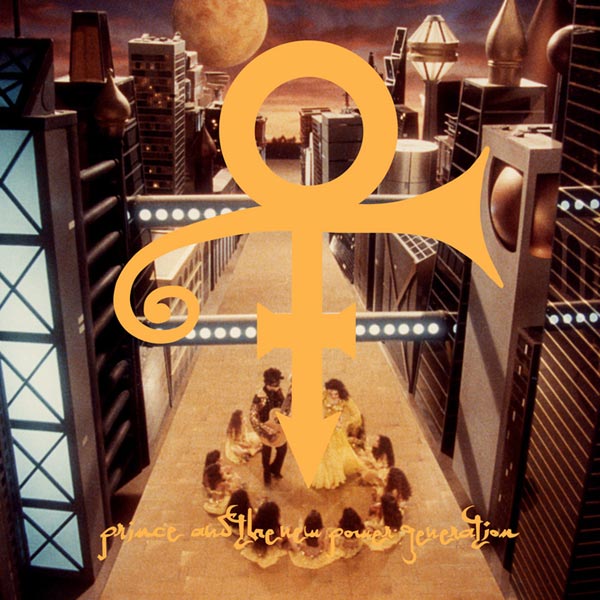
The dispute spilled into the public arena with the release of Prince’s fourteenth album – his second co-credited with the New Power Generation, which to Warner’s despair was named an unpronounceable amalgamation of the male and female “love” symbols Prince love symbol. The dispute over the contract reached its head on 27 April 1993. Having released only the first of the six albums he was contractually required to deliver, out of the blue, Prince stunned Warner by declaring his intention to retire from recording. He would instead furnish the five remaining albums from his vault, by which time amassed a very substantial 500 unreleased songs. Love Symbol Album met comparative, although not massive success, shipping only half the units in the US of the preceding album and peaked at number 5, it produced three top-ten singles nevertheless. While on holiday in Puerto Rico, an idea came to him while looking out to the sea. On the day of his 35th birthday, 7 June 1993, Prince declared his former self ‘dead’ and changed his name to the same unpronounceable moniker of the album, Prince love symbol. Paradoxically the album’s lead single was titled My Name Is Prince.
It divorced me from my past.
To Prince’s mind, his birth name was more a property of Warner Brothers than his own identity, and because the label owned all the music created by ‘Prince’, he believed changing his name to an unpronounceable glyph would somehow void or at least highlight his protest over the 1992 contract. With no name to call him by the change confounded the press, the recording industry, public, and alienated fans. Prince’s use of an integrated Mars (male arrow) and Venus (female plus) symbol originated from 1984 when painted on to his motorbike’s petrol tank for the movie Purple Rain. The version that would become Prince’s name, the iconic Love Symbol (mark 2) – Prince love symbol – was a joint creation between Minneapolis logo designer Mitch Monson and art director Lizz Luce in 1992 working on a lose concept created by Paisley Park’s creative director Sotera Tschetter to add flare to the mark #1 symbol. The finished original being hand drawn was then turned into a vector font, which Paisley Park distributed on a yellow floppy to press outlets disk to enable them to refer to him as Prince love symbol instead of typographically The Artist Formally Known as Prince or O(+>. Interestingly, the font file on that disk was titled PRNFON after his birth initials. Prince trademarked the symbol on 3 January 1995.
Prince toured the Love Symbol album across the US in a leg staged as Act I Tour – his first tour in his home country since Lovesexy ’88. The announcement of the name change to Prince love symbol came between the conclusion of the US tour and prior to embarking on the European leg, named Act II Tour. Considering his much mocked name change, Prince’s reputation and commercial appeal with European audiences showed no signs of slowing: Love Symbol topped the UK album chart. On the completion of the US phase of the tour, the hip hop unit of the band was dropped from NPGs line-up, as the Europe Act II Tour would concentrate on Prince’s music as a solo artist. Europe had long overtaken the US as stronghold of his fan base. Act II Tour in the summer if 1993 was upscaled to larger venues to meet demand, highlighted so clearly with the selling out of 72,000 seats at Wembley Stadium in less than an hour. Prince’s triumphs in Europe was further cemented with a string of BRIT Awards for Best International Solo Artist in 1992, ’93, ’95 and ’96. With further major appearances in headlining the ceremonies at the American Music Awards, World Music Awards, MTV Europe Awards and VH-1 Honors, this backdrop of growing public adulation emboldened Prince’s simmering hostility toward Warner Brothers, deploying every public appearance to advance his quest for creative freedom.
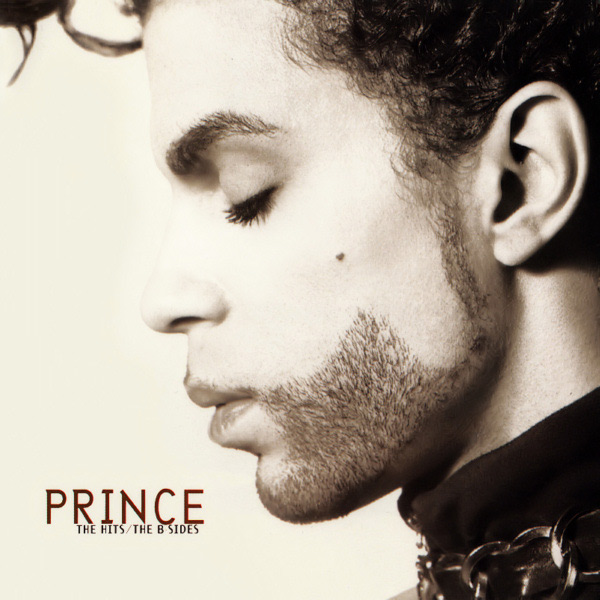
In their attempt to recoup the considerable advances paid to Prince to produce the Love Symbol album, in the autumn of 1993 Warner released what was Prince’s first greatest hits compilation The Hits/The B-Sides. It reached number 19 in the US and 4 in the UK. Their doing so was at direct odds of Prince’s wishes, having always viewed greatest hits packages to mark the death of an artist either professionally or literally, Prince was ideologically opposed to the release of his own, particularly as he viewed his career was in an upswing not decline. In response, he charged the label a veritable fortune to shoot the set’s cover photos. Planning to release it as a five-disk set, production expense saw it pared down to three, and although the release even contained two new songs, Pope and Peach, Prince vowed he would no longer give new material to Warner Brothers. In place of the new material Warner turned to Prince’s unreleased catalogue, dusting down the 1987 master tape of The Black Album they released it in 1994. Once again Prince was outraged, whom was doggedly opposed to ever allow this project see light of day, but sanctioned the release if only to expedite his way through the six album deal. The Black Album peaked at 47 in the US and 36 in the UK. The relationship with Warner seemed irreconcilable.
Because he had enough material stockpiled in his fabled vault and thereby not needed to record fresh music for the contract’s duration, Prince’s 1994 album Come comprised of tracks gleaned entirely from his recent vault. Crediting the work to ‘Prince: 1958-1993’ to aid marketing, Come was his lowest selling album to date, retailing 500,000 copies in the US it peaked in the Billboard chart at number 15. The album suffered from Prince’s resulting disappearance from radio airplay and consequently the charts. Faced with the potential collapse of Prince’s commercial appeal and with that the likelihood of never recouping their cash advances, in 1995 Warner issued two VHS releases on the same day: recordings from 1993 of the cancelled The Undertaker album and footage of the after show performance of the final night of Act II Tour, The Sacrifice of Victor. Prince felt so constrained by the contract and the label’s control of his master recordings, his public reputation was further worsened by pencilling of the word ‘Slave’ on his right cheek in his music videos and at every public appearance, in protest at the contract and with Warner. Refusing all interviews the media became increasingly indifferent to Prince, who in the wake of his name change to The Artist Formally Known As Prince was further vexed why an someone who signed a $100m contract could justify the audacity to call himself a slave. To Prince the $100m be damned, his was a fight on principle and he would not waver.
Part 4 – ‘SLAVE’
(1993-96)

To say things had gotten out of control is to put it mildly. In order to extricate himself from dependency on Warner, Prince had founded his own record label NPG Records in the summer of 1993. It was a pre-empting move since the terms of the now heavily disputed meant Warner could cut off funding to Paisley Park Records at any point. From now on Prince would release his ‘new’ music – starting with GoldNigga which he credited solely to the New Power Generation – through his new and entirely independent label. For the albums remaining under his contracted output with Warner Brothers, Prince hoped to release his next project The Gold Experience on his thirty-seventh birthday – 7 June 1994 – but Warner put a stop to that wish. Having just the previous November released The Black Album and prior to that, August’s Come, the prospect of Prince’s third album within a year and a further dilution of sales was in Warner’s mind beyond the pale. At this point their relationship with Prince plunged to its lowest ebb. Throughout 1994, Prince began to test alternative avenues to release his latest music. That summer, his Glam Slam club in LA staged a dance show ‘Glam Slam Ulysses’ which ran for two weeks, showcasing his latest music. This was followed with a series of concerts called the Interactive Tour performed by Prince and the NPG at Paisley Park and across his chain of Glam Slams clubs in Miami, Minneapolis and LA. When 1995 rolled round, Prince was increasingly despondent and desperate for money, and was so outraged at Warner withholding The Gold Experience he decided to continue regardless its promotional tour that following March. Under the banner The Ultimate Live Experience his 1995 tour served as a platform to highlight his dispute. The tour was so named because the album it was intended to support was itself unavailable and under the ever decreasing prospect to purchase, it was promoted under his legacy as a live performer. During this tour, Prince took to the offensive and on 5 March 1995 gave his first interview for British television, BBC2’s The Sunday Show to air his frustration with Warner. The interview was typically unique in that Prince himself was masked and would not speak directly to the presenter, whom instead put her questions to his dancer (and future wife) Mayte Garcia, to whom Prince would whisper his reply to relay in return.
Warner did eventually release The Gold Experience on 25 September 1995, but throughout the tour Prince only performed his new and as yet unreleased (non-Warner) songs and in result venues did not sell out. Moreover the tour once again just visited Europe, as he refused to return to the US again until he was ‘free’ from the binds of the contract. On the condition that he pay for the release out of his own pocket, Warner Brothers had earlier allowed Prince to release the lead track of The Gold Experience, The Most Beautiful Girl In The World, as a maxi-single through NPG Records in February 1994, stumping up $2 million of his own money to issue it through a partnership with a small LA based distribution house Bellmark Records.
If you don’t own your masters, your master owns you.
The song was inspired by his Puerto Rican choreographer and girlfriend Mayte Jannell Garcia, for whom he wrote an album named Child of the Sun. Mayte had first met Prince just before a show he was performing at Mannheim, Germany, on 8 August 1990 as part of the Nude Tour. Earlier her mother had shot a video tape of Mayte dancing and during a chance meeting with Kirk Johnson, slipped him this tape. Prince watched it and invited Mayte to audition. Two years later she was hired for the Diamonds And Pearls Tour, and from 1993 was a full time dancer and backing vocalist with the NPG. The pair married at the Park Avenue United Methodist Church in Minneapolis on Valentine’s Day 1996. The ceremony was small – attended by just 40 of Prince and Mayte’s direct family – indeed it was so private, Prince hid himself in the van carrying the flowers to travel to the venue. Kirk Johnson was best man and his brother Keith officiated the ceremony. For the occasion, Prince wrote an instrumental album named Kamasutra, which eventually received a commercial release in 1998 as one of five discs issued as the Crystal Ball CD set. The reception was held at Paisley Park with a dinner followed by a party for 1,000 in the soundstage.
They honeymooned in Honolulu, yet unbeknownst to Mayte, Prince staged three arena shows on the island, which would become Mayte’s performances as a member of the band due to her pregnancy. The song Prince wrote for her, The Most Beautiful Girl In The World, became a surprise international hit and crucially his first (and only) single to chart number one in the UK. It was hugely significant moment in that the release met such considerable success without the assistance of Warner Brothers. Prince celebrated this achievement by releasing an accompanying EP named The Beautiful Experience – in doing so producing another industry first: issuing a single to aid the promotion of another single. It was likewise released under NPG Records via Bellmark’s independent distribution.
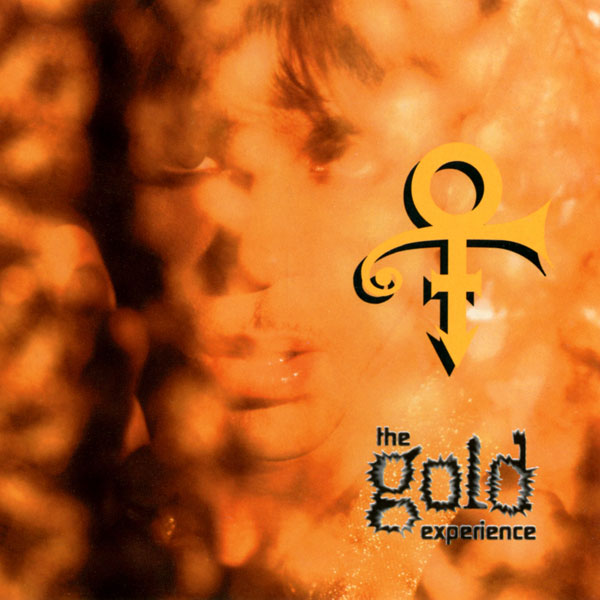
Also unusually, as lead single, The Most Beautiful Girl In The World predated by some nineteen months the eventual release of the album it was intended to promote, Warner’s The Gold Experience. Prince had released this single so early it predated even the release of the previous album Come. To Warner’s eyes their star act was spiralling beyond control, but to Prince the song’s success and distribution through independent channels provided the realisation he no longer needed to rely on the machine and support of a major label. Now unwilling to record the new material which he would otherwise have to hand to Warner Brothers’ ownership, Prince turned to alternative outlets to generate him much needed revenue streams. On 3 August 1993, Prince opened his retail outlet NPG Store in Minneapolis, followed by a second location on 30 April 1994 in London’s trendy Camden Lock. Moving into the digital market, a CD-ROM video game, a 3D virtual puzzle named Interactive in which players unlocked sound recordings of Prince’s music, was released his birthday on 7 June 1994 – the very day he originally hoped would see the release of The Gold Experience.
Take my name, I don’t need it.
What’s My Name
In the UK, Prince’s popularity grew from strength to strength and he visited the country increasingly often on tour, his Camden shop was rousing increasing popularity. But his feud with Warner Brothers continued to tarnish his public image in tabloids everywhere. When collecting his Brit Award in London’s Alexandra Palace on 21 February 1995, Prince used his acceptance speech to confront Warner, whose executives thronged the tables near the stage: “Prince, best? Gold Experience, better. On record, slave.” To Prince, his $100m contract was nothing other than bonded servitude. Indeed, the price at which Warner retailed Prince’s music became yet another bone of contention. The upkeep of Paisley Park was haemorrhaging money, and Prince’s past spending on staff, sumptuous parties and his three Glam Slam nightclubs in Minneapolis, LA and Miami had for years forced him to request ever-increasing advances from Warner. But the label had grown weary of the demands and bridging Prince’s personal expenditure, the open dispute over the contract entrenched the two parties deeper than ever. Prince was consumed in his cause to reclaim the ownership of his past music and pursued a one-man crusade to improve the publishing rights of artists, urging them to abandon their labels because the record companies were more bent on the business of music (Prince protesting in song: “twelve CD’s for a $1 makes me wanna holla.”) than nurturing artistic talent. “Money and art don’t mix” became his mantra.
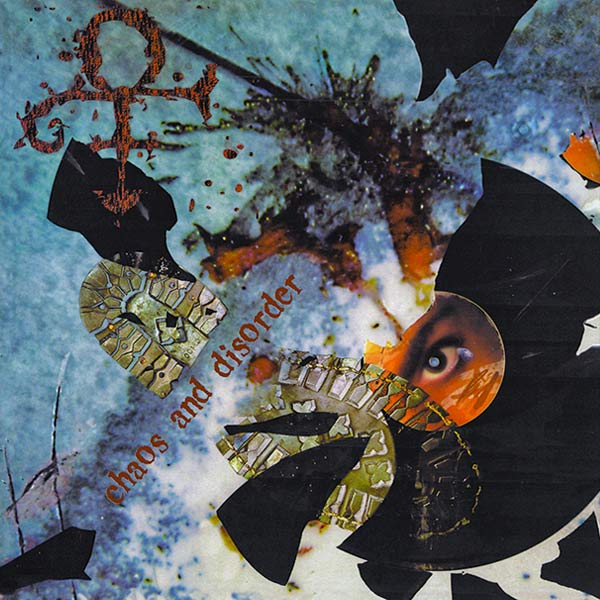
On 22 December 1995, Prince declared that he would fulfil his contract only by providing Warner the remaining requirement of three albums with material gleaned from the vault. The first of these was Chaos And Disorder, which also gave Prince a final opportunity to launch a parting swipe at his soon-to-be former record label. The album, recorded for demo purposes back in 1994, was released in July 1996. Inevitably, Prince’s feud with Warner spilled into his music. Chaos And Disorder was filled with tracks that unleashed brooding, contempt and frustration at the label – songs as Dig U Better Dead, I Rock Therefore I Am, Right The Wrong, Chaos And Disorder and closing with, not only for the album but the sign-off to his eighteen-year Warner career, the lyrics for Had U pointedly ended with “F*** U”. Neither party was keen to promote it the album sunk without trace in the charts in result, having peaked at only number 26. To Prince this was a victory to deny Warner profit from the release. Weary at advancing Prince ever more money, in their attempt to recoup its losses Warner ended their joint venture with Paisley Park Records on 1 February 1994, knowing that doing so would shut it down immediately. In anticipation of such action, Prince through NPG Records swiftly released the leftovers of Paisley’s unfinished project showcasing the songs written by him and recorded by the artists signed to his new label. The album was 1-800 NEW FUNK which also served to promote the order line phone number to Prince’s mail order service, and later his pioneering internet retail store 1800newfunk.com which he launched in 1997 to divorce himself completely from conventional music industry and its middlemen.
I don’t know why, but corporate people have a tendency to think in terms of immediate gratification.
Mo Ostin, Warner Brothers
Undeterred, in 1995 NPG Records released more of Prince’s latest music, the Exodus album, which Prince credited entirely to the New Power Generation. For this release Prince once more changed his name, to stem the threat of legal action from Warner – this time adopting the moniker Tora Tora, the infamous war cry ‘attack, attack’ employed in the Japanese attack of Pearl Harbour. The premise of Exodus was to proclaim that the flood of artists leaving their recording contracts was begun: in it referring to Warner in all but name as ‘that record company’. Although Exodus charted at number 11 in the UK, the succession of three albums struggling commercially highlighted the public’s deepening disillusionment with Prince’s all-consuming fight with Warner. The Glam Slam clubs in LA and Minneapolis shut in August and October 1995, with Miami following suit in February 1996 along with the NPG retail stores in Minneapolis and London. Prince made promotional appearances for Exodus with his face shrouded by a scarf as Warner threatened legal action for breach of contract. But on 26 April 1996, Prince finalises his contractual obligations with Warner, having provided them the required six albums – so early, that the contract itself would not expire until 31 December 1999. That March, he provided Warner material for a soundtrack for their movie Girl 6 for which Prince also granted a rare concession they could issue it under the name ‘Prince’ because his close friend Spike Lee directed the film. Largely comprised of old tracks, Girl 6 received just one newly written song, albeit credited to NPG, its title track. And finally, material for the deal’s sixth and final LP, a collection of out-takes that would be packaged into a collection titled The Vault… Old Friends 4 Sale, Warner withholding it until 1999 to await a commercially viable space in Prince’s crowded release schedule, it peaked at a lowly 85 in the US.
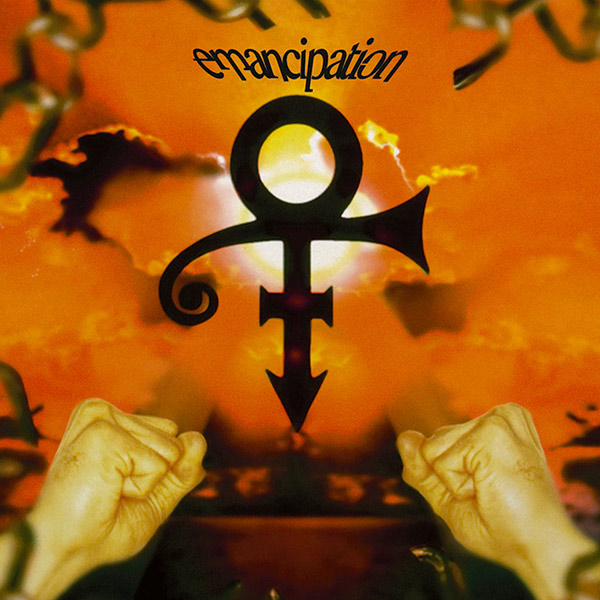
Having met his obligations to Warner Brothers and able to release music at the rate he desired, Prince realised the material distributed through NPG Records only penetrated his core fan base. For this next project, and what would become his third release of 1996, Prince teamed up with EMI-Capitol, interestingly a major label, to put out his first ever triple CD. Comprising 36 newly recorded songs, the album was titled Emancipation in celebration of his freedom from the past constraint on his output. This 180-minute collection housed a veritable gold mine of the music he recorded but subsequently denied Warner while waiting to fulfil the contract with pre-existing material. Prince declared Emancipation “…my most important record. I’m free, and my music is free.” Surprising many by its perfect blend of scale and quality, when Emancipation was released in November 1996 it met both critical acclaim as well as commercial success. Charting at number 11 on Billboard was an impressive feat for a triple CD, indeed Emancipation became the fourth biggest selling triple album in music history. Despite his not unsurprising distrust with major labels, Prince’s relationship with EMI proved cordial and the antitheses of his final years with Warner. But in June 1997, during Emancipation‘s promotion, the venerable EMI label collapsed and was absorbed into Virgin Records. Prince’s future ambitions had to be realised elsewhere.
Prince biography continues »
Delirious: Warner era (1958 – 1990) & NPG era (1997 – 2016)
© Goldies Parade, 1998 – 2024 | Privacy

